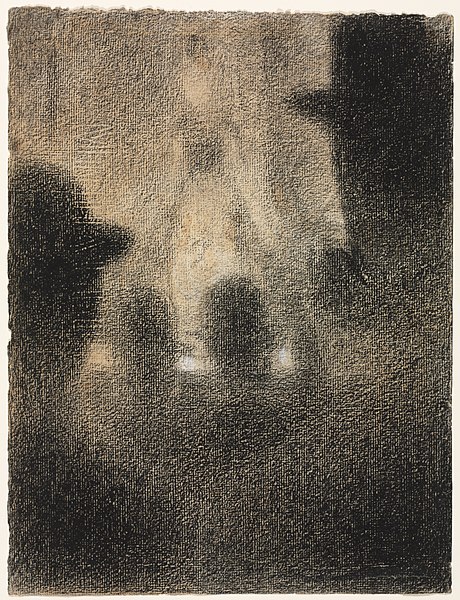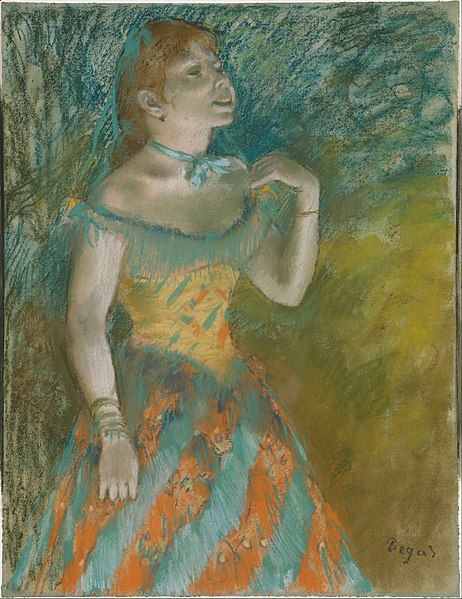Nothing soothes the soul quite like singing. Since the dawn of time, singing has endured as one of humanity’s greatest pastimes and art forms.
So if music is one of, if not the most popular form of art, how would it be portrayed by visual art one might ask. How does art depict art?
Perhaps these two paintings might enlighten us on such an interesting concept. The two paintings of this week are Georges Seurat’s “Café-Concert,” and “The Singer in Green” by Edgar Degas.
Now, Café-Concert— upon first glance— might appear somewhat blurry, like gazing through a rain-covered window upon a crowded night club.
This is because Seurat used conte crayons, which like most crayons, tends to create a somewhat blurred vision. In addition, the crayon is heightened with white chalk upon a standard 12 3/8” by 9 5/16” paper.

Personally, I find this piece quite fascinating. From its mostly black and white color scheme, to the vague yet visible woman singing, I’d say this image is from the perspective of a tipsy bar-goer, who’s vision is impaired due to one too many shots of whiskey perhaps.
The second picture, “The Singer in Green,” probably catches one’s eye more quickly than the first. Whereas the Café-Concert is comprised of simple shapes and simple muted colors, this piece is vibrant, practically leaping off the canvas, which is light blue laid paper as opposed to regular.

The entire drawing is comprised completely of chalk pastels, which causes it to be quite fragile and in need of protection from fixative spray due to its crumbly nature.
While both pieces are fine art indeed, they are both created through very different materials, and like music, they pander to different emotions.
“Café-Concert” gives off a rather melancholy mood of a sad song being sung. While “The Singer in Green” invokes a sense of joy and celebration. Truly it is fascinating how visual and auditory art can convey such emotions with either simple shapes and shades, or vibrant bursts and thick lines of color.
Samuel J. Claude
Associate Editor


